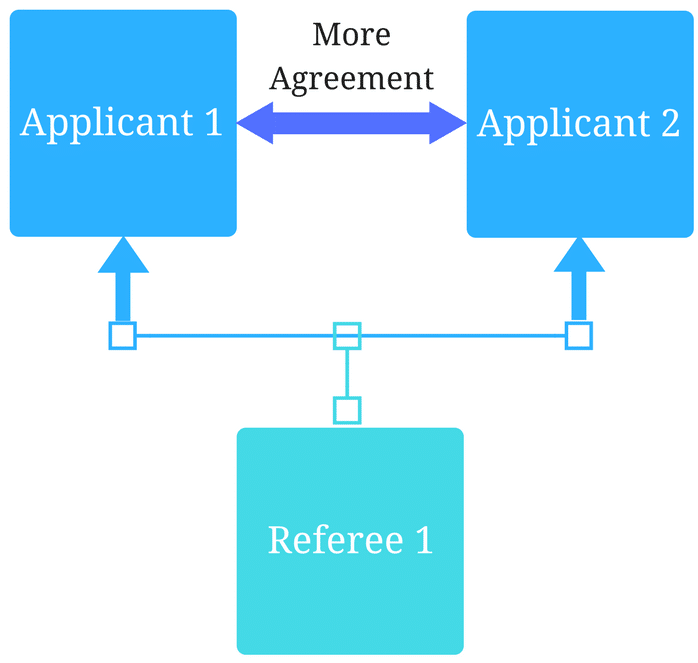The power of centralized MedEd data

October 30, 2020
Moving beyond reports and dashboards with Acuity Analytics
Acuity Analytics has helped medical schools centralize and report on their data from multiple systems since 2017. Through our reports and dashboards powered by our warehouse, customers have gained greater insight into how their students, faculty, assessments, and curriculum are performing. While our reports and dashboards are the most common way of utilizing the data in Acuity Analytics, it is by no means the only way. Key stakeholders such as IT, researchers, and data-savvy administrators have expressed the desire to access the underlying data that powers these dashboards. We couldn’t agree more with this, which is why Acuity Analytics has been built as an open data platform that is optimized for easy and secure access to your centralized data.
From the start, we’ve worked hard to build Acuity Analytics in a way that makes using the data warehouse simple and intuitive. The systems where Acuity Analytics pulls your data from are optimized for incremental additions, updates, and deletions of data (e.g., OLTP) and were never designed to be easy to query. This means in-depth data analysis using a vendor’s underlying system database is rarely worth the effort.
Acuity Analytics makes analysis easier by centralizing all your data from multiple siloed systems and transforming that data into dimensional models that revolve around key events (such as a learner achieving a grade) that are quick to understand and query. For instance, our “Learner Grades” dimensional model allows powerful segmentation, aggregation, and filtering of grades and scores based on multiple aspects of a learner, the course they were in, or the exam they wrote.
Effort has also been made to ensure our data models use terms custom-tailored to the medical education space instead of technical jargon that is hard to understand. We strive for all our data models to be as self-evident as possible, but also back them up with a meticulously documented data dictionary. This reference document details every aspect of our warehouse models, including descriptions, data types, example data, and which source systems can populate each field.
Exploring more ways to access your data
All of this foundational work paves the way for users to directly access their Acuity Analytics warehouse in a variety of ways. Currently, users can export data from any visualization for further analysis in Excel by right clicking on the visualization, selecting “Export >” and clicking “Export data”. In the near future, we’ll give clients more ways to access their data by exploring the use of direct database connections (ODBC), flat-file spreadsheet exports, and APIs (REST, GraphQL). Underpinning each new way of accessing this data will be the ability for system administrators to securely control and limit data access by user or connection.
Alternative uses of Acuity Analytics
Allowing more ways to access your warehouse unlocks many potential uses for your data:
1. Kick-starting your own internal warehouse efforts
Some medical schools we talk to already have internal data warehouse efforts underway. Oftentimes these efforts either won’t be incorporating the types of data that are already in Acuity Analytics, or the timeframe to having this data in the warehouse is too long for the stakeholders to wait. Acuity Analytics provides users with the ability to use its warehouse as an intermediate step to eventually pulling in this medical education data into a larger warehouse maintained internally by the school. This could be done by connecting to the Acuity Analytics warehouse through an ODBC or API connection that would allow an internally-developed data pipeline to automatically pull this information into your school’s greater enterprise data warehouse.
2. Transporting data to other systems
Similarly, schools are often looking for a way to feed data from one system to another (such as posting final course grades stored in one system to an SIS system for transcript records). In many of these cases, the systems they wish to pull data from do not provide easy ways to export data. By connecting directly with the Acuity Analytics warehouse, users can more easily transport this data once it enters the warehouse – pulling it either manually (through flat-file exports) or through custom automation scripts (via ODBC or API connections) in order to send it on to destination systems.
3. Connecting to data analysis tools
Acuity Analytics provides stellar comprehensive reporting and dashboards out of the box. These are specifically tailored to help answer the most common questions around curriculum, student, and faculty performance. While this allows users to get immediate value from their centralized data, more advanced users may wish to connect their Analytics data to other tools in order to do different kinds of analysis, including
- Performing deeper statistical studies on the data using tools such as R or SPSS
- Creating Bespoke, custom visualizations that allow for a specific look and feel by using a business intelligence (BI) tool such as Tableau or PowerBI
- Applying machine learning models on the data that can be used for identifying hard-to-see trends, correlations, and anomalies using tools like PyTorch, TensorFlow, or AWS Sagemaker
4. Creating internal tools and apps powered by Analytics
Creating internal data-centric applications becomes a breeze using the Acuity Analytics warehouse. Our warehouse and data pipeline do the heavy lifting of pulling disparate data sets together for easy retrieval and use in the applications of your dream. We most commonly hear about desires to use this data to power internally-developed student portals, help automate MSPE (i.e. Dean’s Letter) preparation, and automate the delivery of KPIs to the dean’s office.
Conclusion
We’re excited about all the possible ways people can harness the power of centralized data in Acuity Analytics. The foundation of our platform emphasizes openness and flexibility over the prescriptive, closed and rigid systems medical schools have unfortunately come to expect with traditional education software vendors. Our vision is to make people at all levels of medical education equipped to make timely and proactive data-informed decisions; this only comes by empowering schools to reuse and remix their data in a multitude of ways.
Interested in discussing how Acuity Analytics could help advance your school’s data initiatives? Contact us today and we’d be happy to help.
Related Articles

How interviews could be misleading your admissions...
Most schools consider the interview an important portion of their admissions process, hence a considerable…
Reference letters in academic admissions: useful o...
Because of the lack of innovation, there are often few opportunities to examine current legacy…
